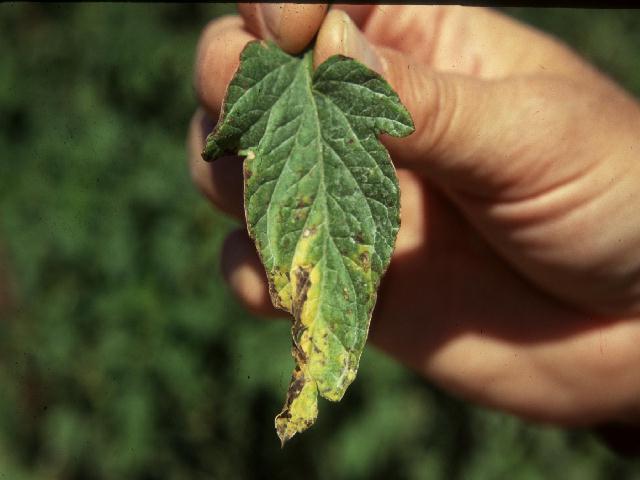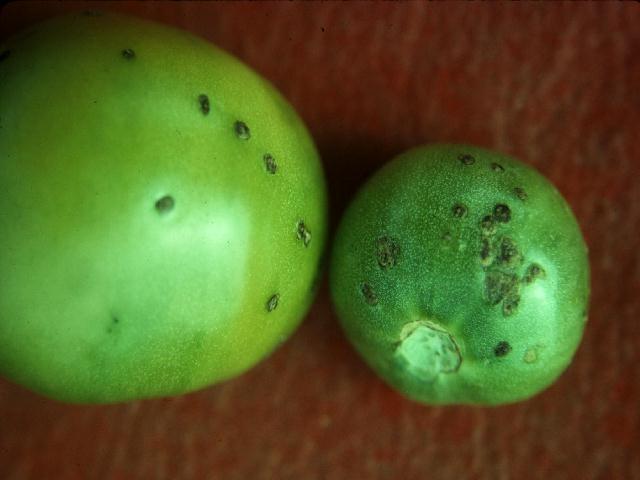High temperatures and wet weather produce the perfect conditions for the onset of bacterial spot in tomato fields. The disease is caused by various species of Xanthomonas bacteria. Small spots (1/8 inch) form on leaves, stems, and fruit. The leaf spots are sometimes outlined in yellow. Fruit spots are raised and cause the tomato skin to rupture. Leaf drop may occur in extreme cases.
Bacterial spot is prevalent during warm, moist weather. It survives in volunteer plants (tomatoes and peppers) and plant debris. It is vectored by wind-driven rain or irrigation droplets. Contaminated seed can also serve as an inoculum source.
Disease Management:
- Cultural Control – Crop rotation and off-site cull piles will reduce disease transfer from volunteers and crop residue. Seed treatment and disease-free transplant production will reduce disease incidence.
- Chemical Control – Bacterial spot can become resistant to copper, but a combination of mancozeb and copper bactericides is effective. Sufficient control can be achieved by the plant inducer Actigard ®.
- Resistant Varieties – There are no available bacterial spot resistant tomato cultivars. A number of resistant pepper cultivars are available and are listed in the Pepper Production publication.
Good scouting and proactive cultural controls are the best methods for keeping vegetable diseases in check. For more information on bacterial spot and diagnosing other tomato diseases, please visit the following links:
- Crops to Consider for Fall Planting - September 26, 2025
- Benefits of Manure Fertilizers and Analysis - March 21, 2025
- Mushrooms – A Crop Worth Consideration for the Back Forty - October 4, 2024


